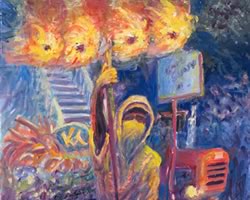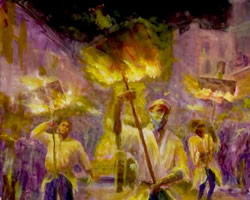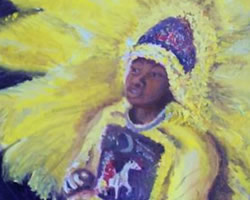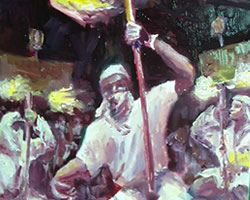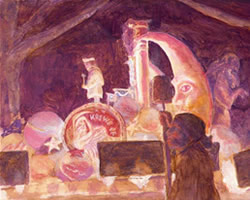Mardi Gras Paintings
The Mardi Gras Indians are another Great Mardi Gras tradition.
The early days of New Orleans found a city with an economy based on slavery. Local Louisiana Indians were the first to really treat slaves with the respect they deserved. Many slaves that escaped from their owners were accepted by these local tribes' society as equals. Indians also assisted slaves get north or west to freedom. They have never forgotten this support and named themselves after native Indians to pay them respect for their assistance in escaping the tyranny of their lives in slavery.
The Mardi Gras tribes were formed in neighborhoods. The early days of these Mardi Gras Tribes were sometimes violent. Those days are long gone. Today it is a celebration of African-American heritage. They have their own songs, music and rituals.
These tribes are made up of African-American men, sometimes accompanied by women and children. They adorn themselves with new amazing hand-sewn creations every year. Their costumes of feathers, beads, rhinestones, sequins, and other materials are a sight to behold and a rhythm to hear! I love them!
Traveling in groups called “tribes” or “gangs,” the Indians traverse the streets of their neighborhoods in a pageant far removed from the official Carnival of parades and tourists. A “Big Chief” presides over each tribe, whose members include the Second Chief, the Trail Chief, the Spy Boy (who anticipates encounters with rival tribes), the Flag Boy, the Wild Man (the Medicine Man), and the Queen. It is worth the trip to catch these tribes on parade!
 H. Eric Hartman, Art-Man
H. Eric Hartman, Art-Man